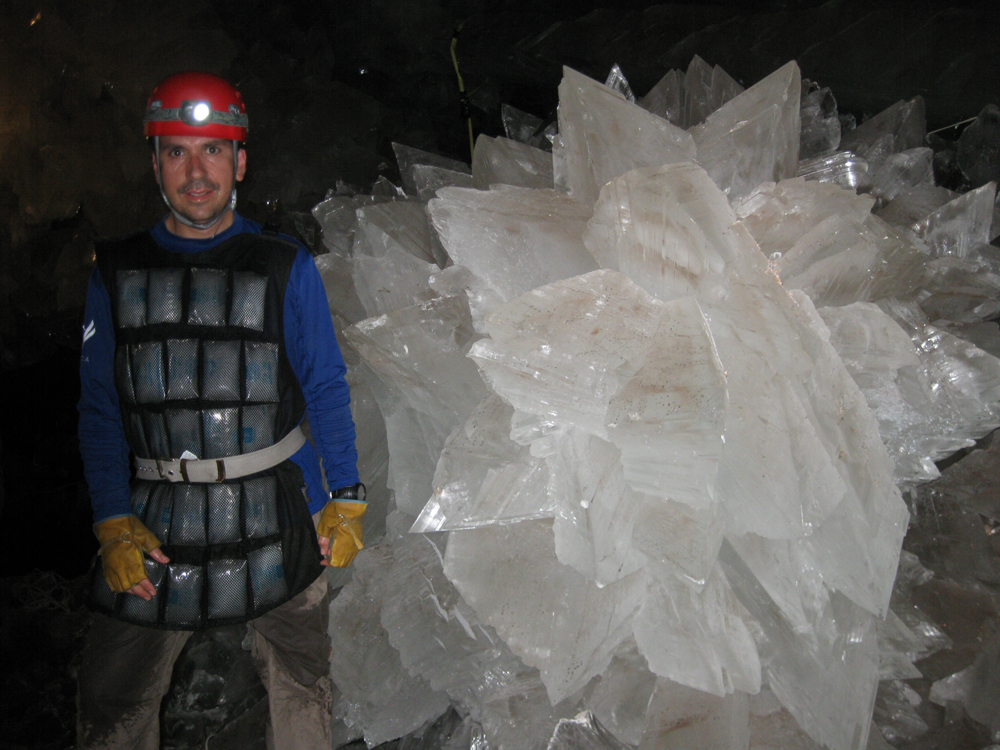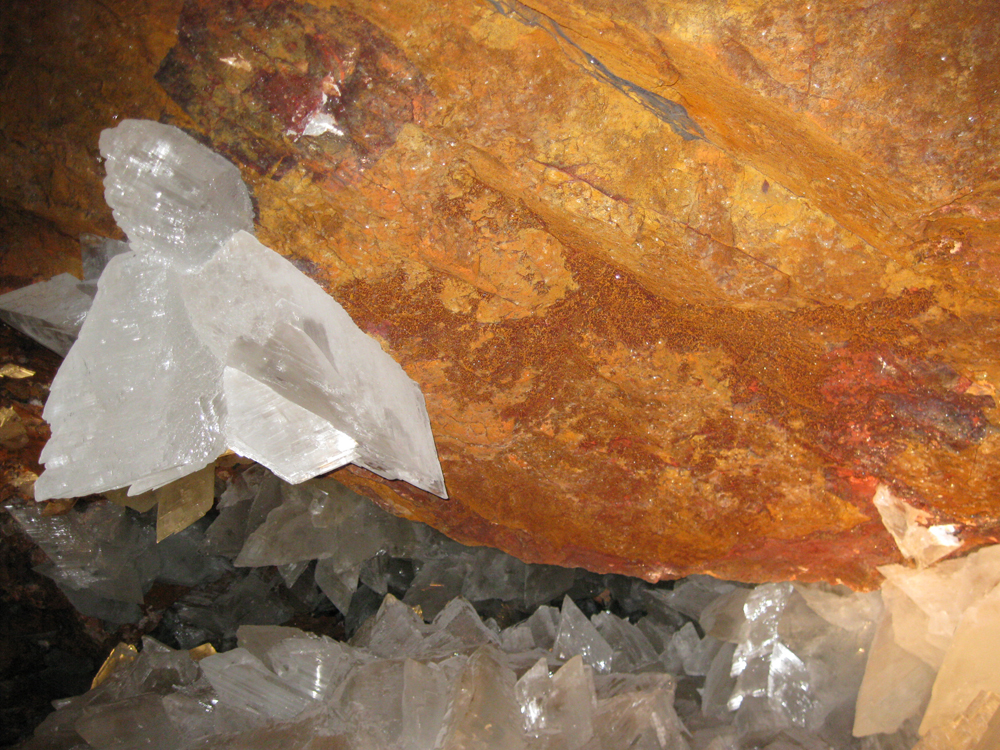In Photos: Shimmering Cave of the Crystals
Giant Gypsum Rosette

Wearing an ice-pack vest, Mario Corsalini stands by a giant rosette of gypsum in the Naica Mine's crystal cavern.
[Read the full story on the revived microbes from the crystal cave]
Butterfly Crystal

A multifaceted "butterfly" crystal clings to the wall in the Naica Mine's Cave of Crystals. These crystals formed in mineral-rich water heated to right around 136 degrees F (58 degrees C), a temperature at which the mineral anhydrite in the water is deposited as gypsum, according to 2007 research in the journal Geology. The gypsum in the crystals is in the form of selenite.
Experiencing the Cave

Laura Rosales Lagarde of the University of Nevada, Las Vegas, takes a moment to experience the heat of the Cave of Crystals without an ice suit or other protective gear. With temperatures that can hover near 140 degrees F (60 degrees C), the cave is tolerable for an unsuited person for just a few moments.
[Read the full story on the revived microbes from the crystal cave]
Get the world’s most fascinating discoveries delivered straight to your inbox.

Stephanie Pappas is a contributing writer for Live Science, covering topics ranging from geoscience to archaeology to the human brain and behavior. She was previously a senior writer for Live Science but is now a freelancer based in Denver, Colorado, and regularly contributes to Scientific American and The Monitor, the monthly magazine of the American Psychological Association. Stephanie received a bachelor's degree in psychology from the University of South Carolina and a graduate certificate in science communication from the University of California, Santa Cruz.


